Lockville Park is a 6 acre park in Fairfield County containing the ruins of three locks from what was once the Ohio & Erie Canal. The park also has a covered bridge that was constructed in 1888.
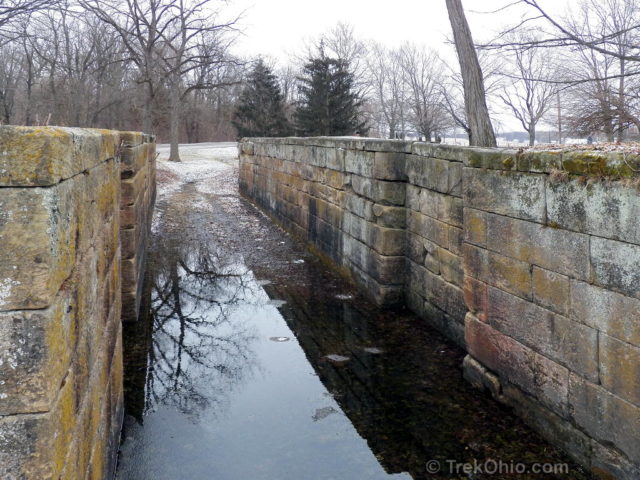
If you look at a map of Ohio, you’ll see Lake Erie on the northern edge. The irregular southern edge is formed by the Ohio River. The Ohio River feeds into the Mississippi River which flows into the Gulf of Mexico. Both the Ohio River and Lake Erie provided convenient water transportation for Ohioans from early settlers to today. But in the early 1800’s moving goods inside the borders of Ohio was an expensive undertaking.
There was a need to create a transportation network to move goods cheaply to either Lake Erie in the north, or the Ohio River to the south. In 1822, the state legislature created a commission to plan, implement, and operate a canal system that would become known as the Ohio & Erie Canal. Ground was broken in 1825 and work was completed in 1833. The state then added a second north / south canal along the Miami River known as Miami & Erie Canal, as well as many feeder canals.
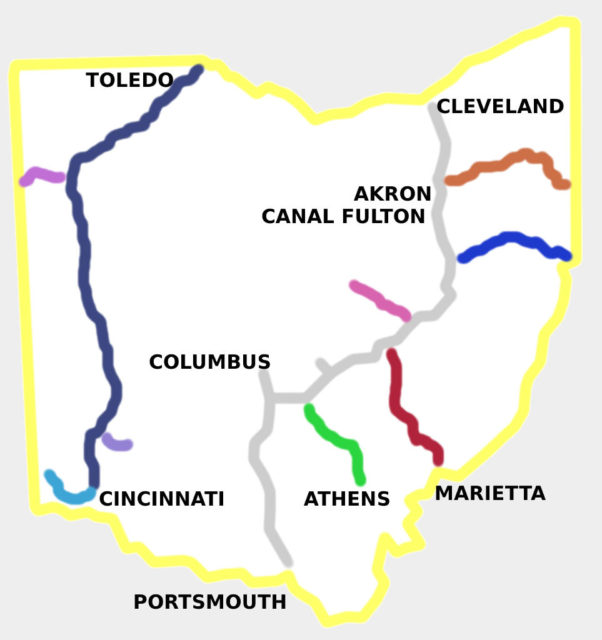
The work was done in a pre-industrial era – so the canal was hand dug, mostly by German and Irish immigrants. When completed, transportation costs in Ohio dropped from $125 / ton to $25 / ton. The canal had a minimum width of 40 feet (12 meters). The canals were about 4 feet deep, and there was a 4 mph speed limit to prevent boat wakes from eroding the canal’s sides. Towpaths on either side of a canal allowed barges to be pulled by animal teams, typically a couple of horse or mules.
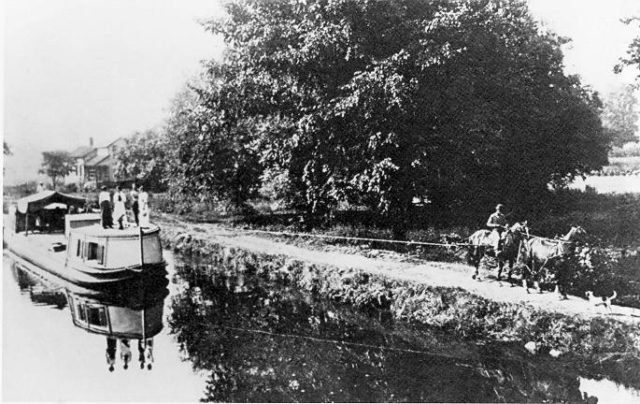
Changes in elevation were handled by locks – rectangular canal sections built of stone with gates on either end. A barge would enter a lock and the gate would close. Water was either added or removed to raise or lower the barge. The gate on the other side would be opened and the barge would emerge. A barge could carry up to 10 tons of goods, but traveled only 3-4 miles per hour (5-6.5 kph).
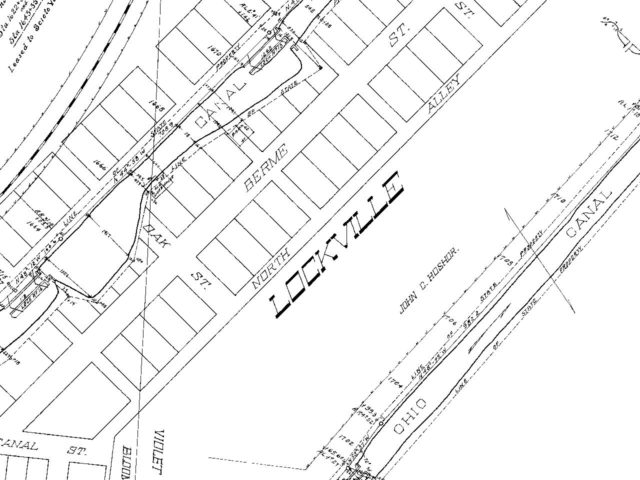
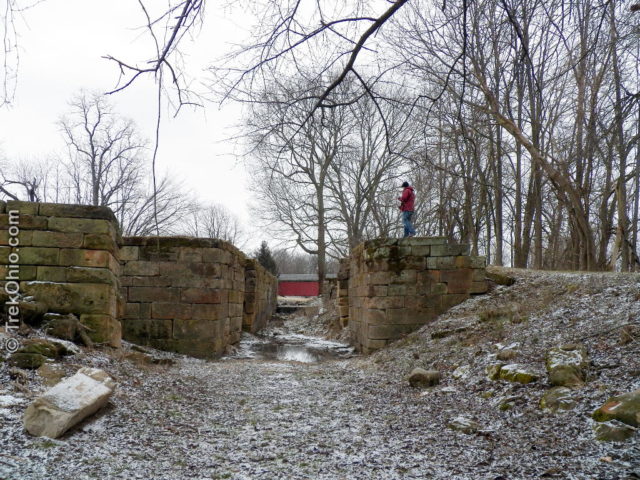
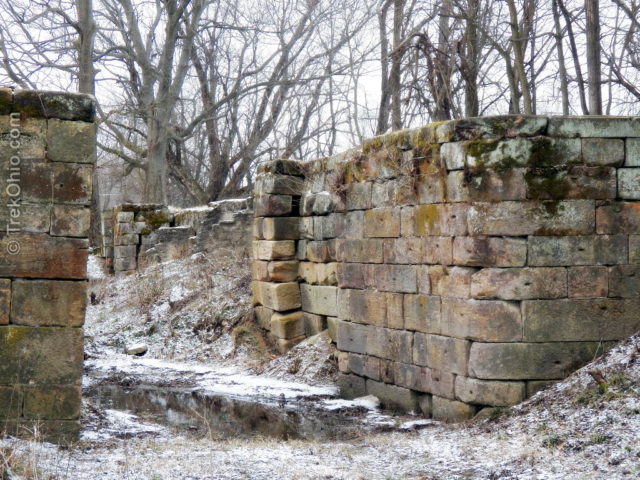
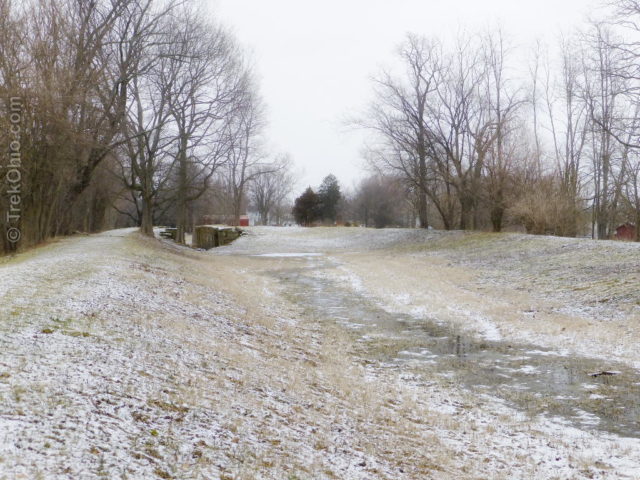
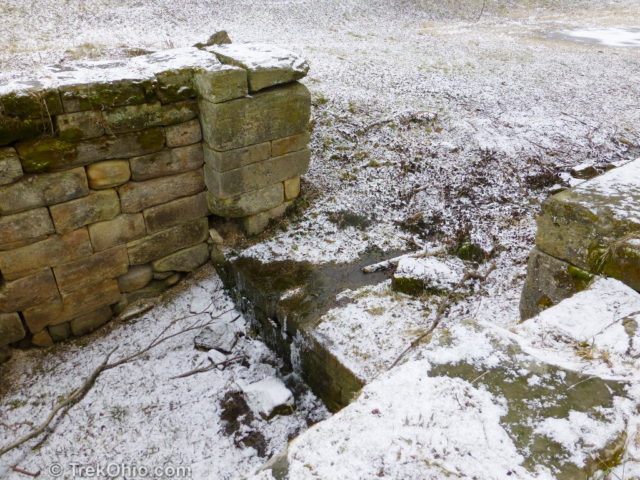
By the late 1800’s the canal was losing money due to competition from railroads. A flood in 1913 destroyed portions of the canal and the system was shutdown for good.
Lockville Park contains three locks from the Ohio & Erie Canal. You can walk along the former towpath from lock to lock. The park also contains the Hartman Covered Bridge #2 built in 1888. Previously the bridge was located on Wheeling Rd over Raccoon Creek. There is a small parking area located just beyond the park entrance, and a nearby picnic shelter.
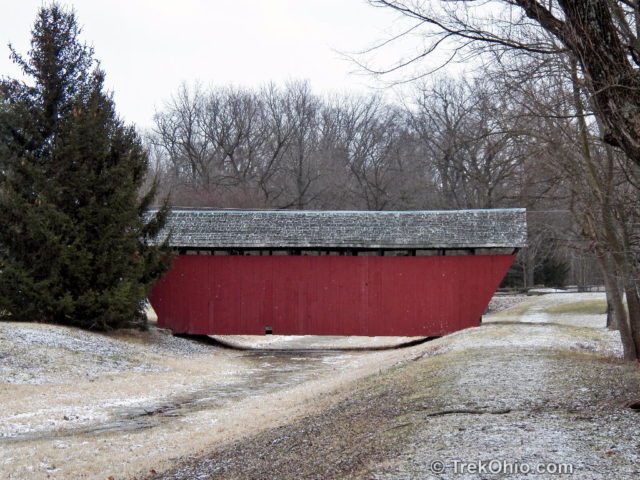
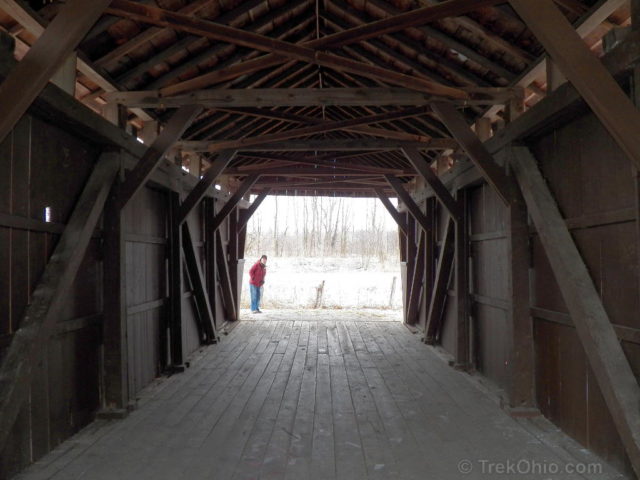
Additional information
- TrekOhio: Fairfield County Parks & Nature Preserves — This is the county where Lockville Park is located; check out this page for links to the official site and for information on nearby parks and preserves.
- ODNR: Recreation Along Ohio's Canals
- ODNR: Travel Back in Time: Discover Ohio’s Miami and Erie Canal (PDF)
- ODNR: History & Hydraulics of Ohio's Canals
- Wikipedia: Ohio & Erie Canal
- Wikipedia: List of Ohio covered bridges
- Ohio Historical Society: Ohio & Erie Canal
- ErieCanal.org: The Erie Canal
- Library of Congress: Audio recordings of canal songs
Location
- Address: 5895 Pickerington Road NW, Carroll, Ohio 43112
- Directions: From US-33 take Pickerington Rd (County Highway 20) south. After 1.2 miles you will see Lockville Park on the right.
- GPS Coordinates: 39.817526, -82.738506
- Google Maps: View on map or get directions
More on Ohio's Industrial History
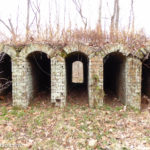
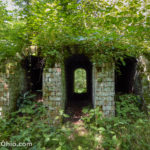
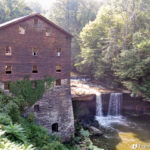
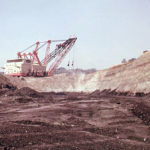
I own the old brick house built cir. 1840
This post inspires me very much. When I was young I lived in a small town in which there were two canals, old and new one. If You do not mind, please, You could compare our old canal with this one in my post. There are four photos from old canal in my post.
Canal of Taipale.
Happy Sunday.
Very nice photos, thank you for sharing them. The Ohio & Erie Canal was pretty much abandoned except for a few small segments that are still operated for tourists. Unlike your operational canal, it was never modernized for ship traffic. Its function has been taken over by rail and truck transport (and more recently air cargo).
Thank you for the feedback and all the links. I’ll check out the Gander Mountain Store in Sheffield Village.
Patricia
Patricia, I just got word that the Gander Mountain Store that I used to go to no longer carries gear for hikers. Apparently they have decided to focus exclusively on hunting-related merchandize. That may be true of the entire chain.
This one is added to my list when I get down in that area. Could you give some hints about good walking / hiking shoes and other gear you feel important?
Patricia, leading up to Christmas Bob and I did a post on some of our favorite gear, including my hiking boots: Christmas Gifts for the Outdoor Enthusiast. I love my hiking boots. They are breathable, yet waterproof; they have good traction and good ankle support. I didn’t buy my boots online because I like to try shoes on before purchasing them I bought mine at Gander Mountain in Reynoldsburg, Ohio.
If I mull over which gear I find the most helpful, I think it would be these:
In hot weather it can also help to bring little packets of flavored electrolytes to add to your water bottles; this turns your water into something resembling a sports drink, Bob is more prone to getting dehydrated than I am, and he’s found these to be especially helpful. He wrote up an article about them called Water.
Note that the Gander Mountain in Reynoldsburg has now converted to be a pure gun store. All of the hiking equipment is gone.
Oh, I didn’t know that. Thanks for the heads up.
the bricks of the lock have so much colour and texture.-who knows, maybe they will fill again one day.